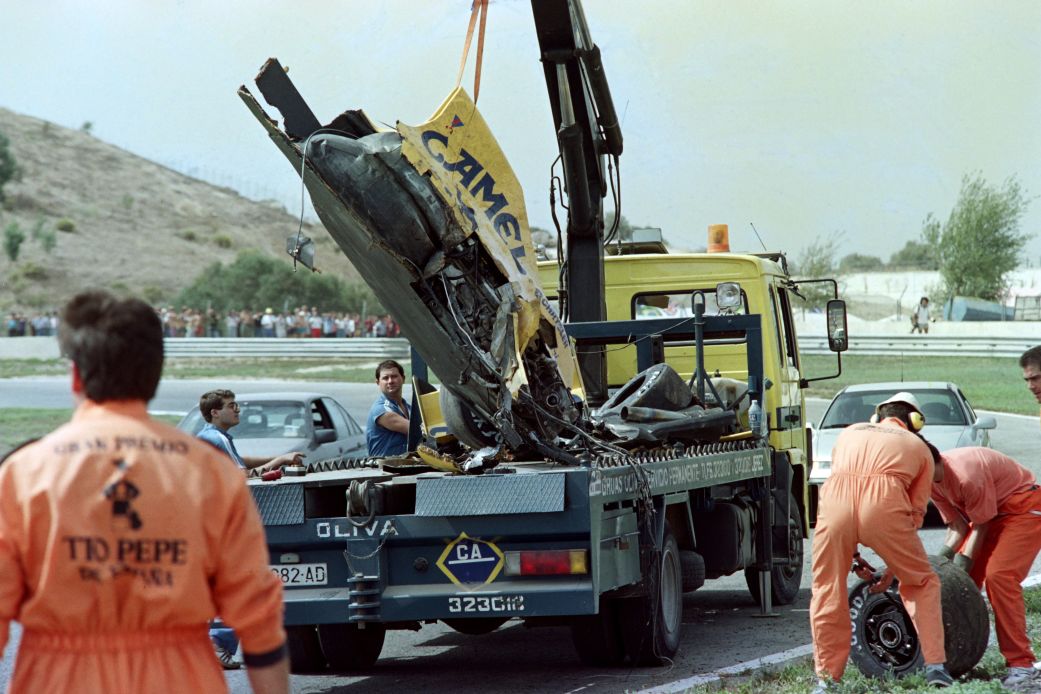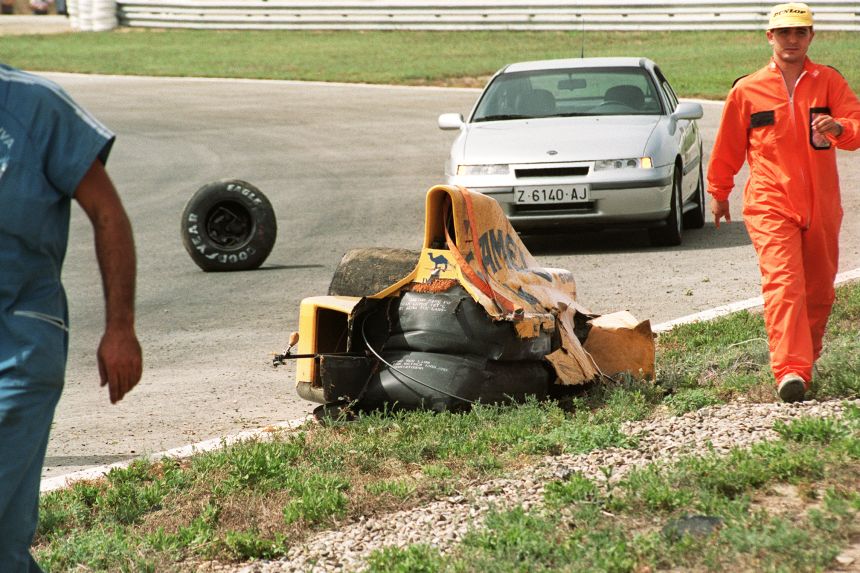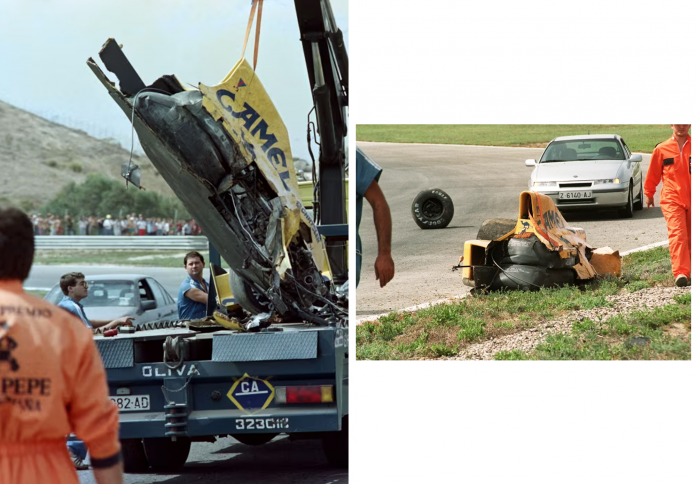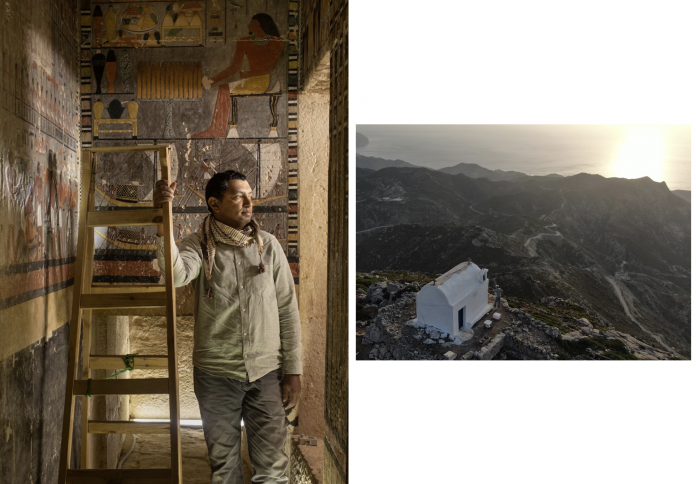For former Formula One driver Martin Donnelly, the release of the summer blockbuster “F1 the Movie,” starring Brad Pitt, presented a chilling, unexpected reckoning with his past. While the movie is largely fictional, its protagonist’s traumatic origin story is based precisely on Donnelly’s near-fatal 1990 crash at the Spanish Grand Prix—an incident considered one of the most horrific in motorsport history. Donnelly, who has no memory of the suspension failure that sent him into the Armco barrier at 160 mph, was forced to relive the event in the third person as producers recreated the scene for the film. This surreal experience, which included fielding a personal call from Lewis Hamilton and coaching Brad Pitt on set, brought Donnelly face-to-face with the cost of his survival—a bittersweet reality balanced by the tragic fate of his friend, the legendary Ayrton Senna.
The Jerez Horror: Anatomy of a Catastrophe
Martin Donnelly’s crash at the Jerez race track in 1990 remains one of the most vivid and horrifying demonstrations of the brute force involved in a high-speed Formula One accident.

During a practice session for the Spanish Grand Prix, a suspension failure on Donnelly’s Lotus sent his car uncontrollably hurtling toward the Armco barrier. Traveling at approximately 160 miles per hour, the impact caused the car’s carbon fiber tub to shatter “like a car bomb,” he recalled. The energy of the impact was so severe that Donnelly, still strapped into his seat, was thrown out by nearly 200 feet, coming to rest awkwardly in the middle of the track. As fellow cars narrowly navigated the scene, marshals, anticipating the worst, waited for the arrival of the legendary F1 doctor, Sid Watkins. Donnelly was unconscious, his face blue from having swallowed his tongue, and suffered numerous broken bones, including both legs. He was read his last rites in a Seville hospital and spent weeks on a respirator and kidney dialysis, lucky to escape with his life and his limbs.
The Hollywood Call: Permission and Surreal Encounters
Over three decades later, the traumatic incident was selected by the movie’s producers, including seven-time world champion Lewis Hamilton, to serve as the narrative foundation for the film’s protagonist.

The decision was made once the production team viewed the dramatic archival footage of the Jerez crash. Hamilton personally called Donnelly to seek his permission, blindsiding the former racer one Saturday night at home. Donnelly initially mistook the call for a scam, admitting, “I was quite aggressive… It’s not every day you receive a call from a seven-time world champion!” Following the agreement, Donnelly found himself on set, coaching none other than Brad Pitt, who played the character based on his life. Donnelly recalled giving Pitt simple, almost spiritual advice before he entered the car: “Ask the car to be good to you today, pray that you’re going to be both quick and safe.” The surreal nature of coaching a Hollywood heartthrob on the intricacies of his traumatic experience was a bizarre full-circle moment.
The Reality Check: Seeing the Crash Recreated
The production process forced Donnelly to witness the devastating details of his crash for the first time, an experience he described as a profound and unsettling “reality check.”

Donnelly admitted that before the movie, he had never dwelt on the inherent dangers of high-speed racing, always believing accidents were things that “happened to other drivers, not me.” However, his consultancy work for the film broke that mental barrier. He watched as the director repeatedly filmed the accident, utilizing a mannequin in racing gear. “I watched them get a mannequin in yellow overalls and a helmet fly out of this car 15 times,” he recounted. The sight of the mannequin being dragged along the ground made him wonder if this horrific moment was “what I’m known for.” While he noted the footage of the mannequin was ultimately unused—as the original TV recording possessed an unmatched intensity—the repeated, cold recreation of his near-death experience served as the first true, third-person perspective of his most traumatic memory.
Bittersweet Survival: Legacy and the Senna Comparison
While Donnelly feels “honored and privileged” to have his story documented, the experience is profoundly bittersweet, fueling his lasting regret over the career that was prematurely cut short.

Donnelly’s injuries were severe enough to end his Formula One career, forcing him to watch from the sidelines as his contemporaries ascended to fame and wealth. He lamented the lost opportunity, recalling his skill level: “My friends at the time – Damon Hill, Jonny Herbert, Eddie Irvine, David Coulthard have all gone on to be very successful and very rich. Why wasn’t I given a chance to have that? Because when they were my teammates, I kicked their asses!” However, Donnelly quickly tempered his envy by recalling the fate of his friend and former rival, Ayrton Senna. Senna, who had famously walked to the site of Donnelly’s crash to offer help, died in a devastating accident four years later. The comparison offered Donnelly a final perspective: “My friend Senna is dead… His death on May 1st, 1994, was the final nail in the coffin for me to say, ‘Hey Martin, look around you, you’re in the paddock, you’re still involved with the sport that you love. You’ve got no right to complain.’”










